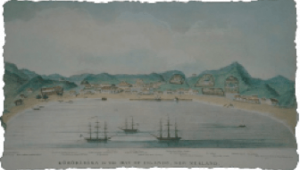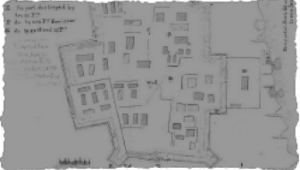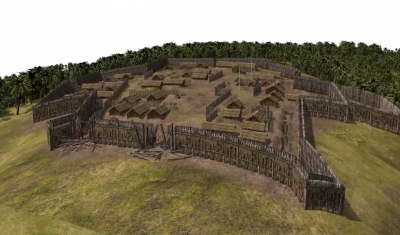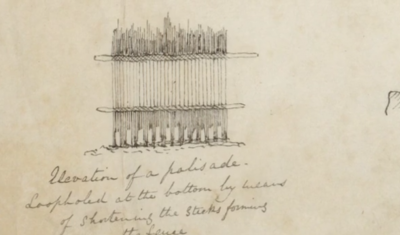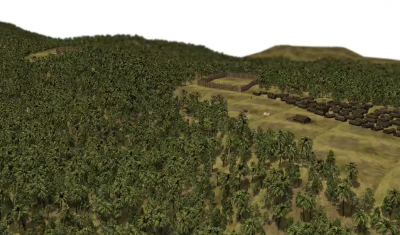
Pieces of
the Puzzle



Reconstructing Ruapekapeka Pā and battlefield is not exactly easy, but there is some excellent source material to draw upon. When the soldiers went inside the pā they were very impressed – they wrote descriptions in their diaries, they sketched diagrams and drew plans of the defences.

Sketch of the pā
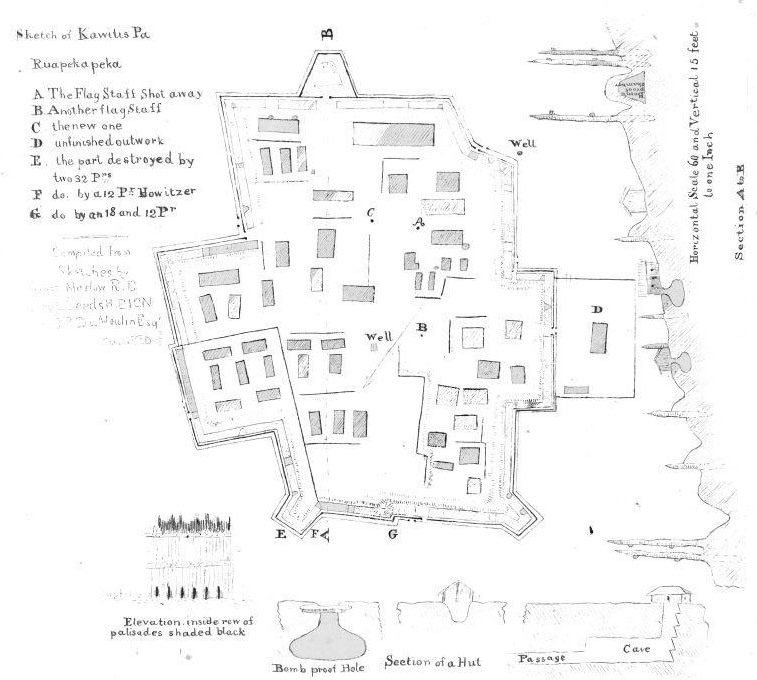
Sketch of the pā
One of the skills expected of officers was to make pictorial records of battles. John Williams, Cyprian Bridge and George Hyde Park had considerable artistic talent, and their paintings provide vivid impressions and details, which would otherwise be forgotten.
The officers prepared official military despatches to send to their superiors in England. In fact, the British authorities were so impressed that a plan and scale model of Ruapekapeka Pā was tabled at the House of Commons in London.
Various parties recorded the pā, as they saw it, leaving us with a legacy of impressions of this marvel of engineering.
We are not limited to first-hand evidence from people who were actually there. Plenty of people have written about the pā in subsequent years. An early work by James Cowan is particularly useful – he visited the pā site in 1919 and provides a colourful description. Stories passed down by Māori also have something to add. That knowledge is vested in the descendants of the warriors who fought in the battle. These oral histories are more about the people and less about the physical structure of the pā, but nevertheless, they can provide some valuable insights.
As well as the paper records and spoken histories, there is also the site itself. The discipline of archaeology has a lot to offer when it comes to reconstructing Ruapekapeka, translating the humps and hollows in the landscape, and offering a peak at what is hidden below the surface of the ground. Archaeological excavations are by nature destructive – whatever you dig up is destroyed forever. Luckily, modern technology provides a non-destructive alternative. Parts of the Ruapekapeka Pā and battlefield have been surveyed using geophysical techniques, with machines that can detect archaeological features that cannot be seen from the surface.
By weaving together the strands of evidence from different sources, we can begin to rebuild Ruapekapeka in the virtual world. The results will not be perfect. Some of the details are lost forever, the gaps paved over with educated guesses and speculation. Other details have yet to be revealed, and this will provide work for future archaeologists, historians and Māori holders of knowledge.
